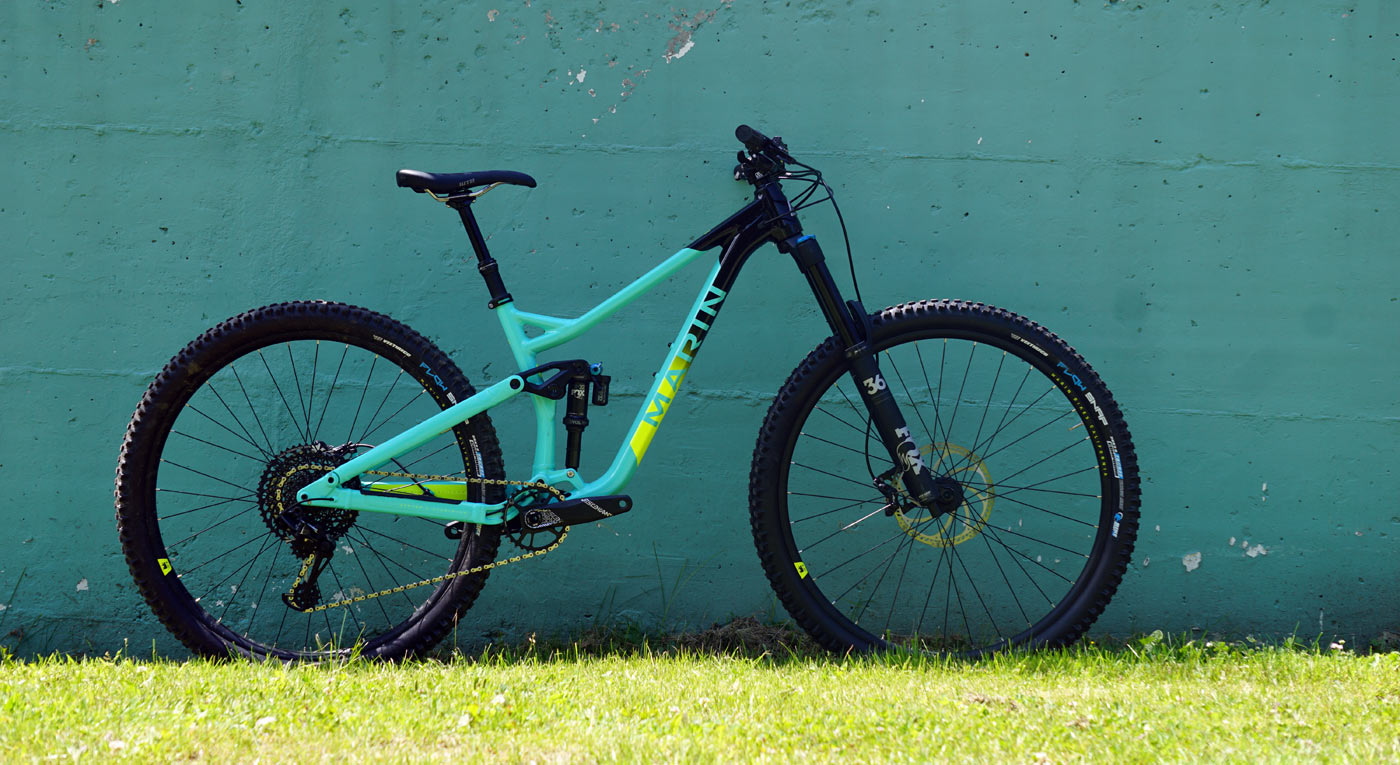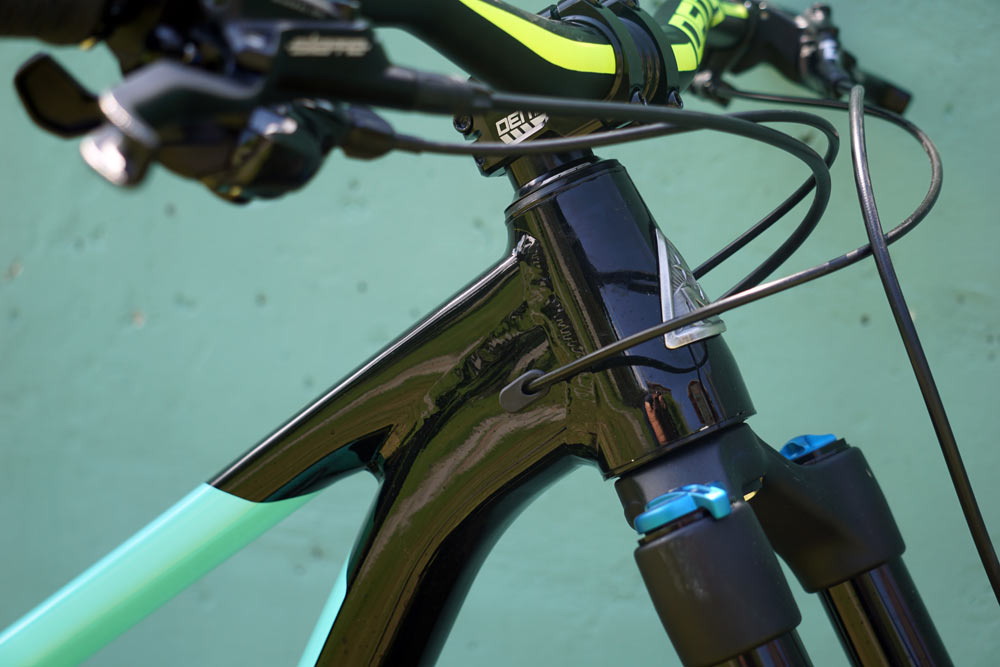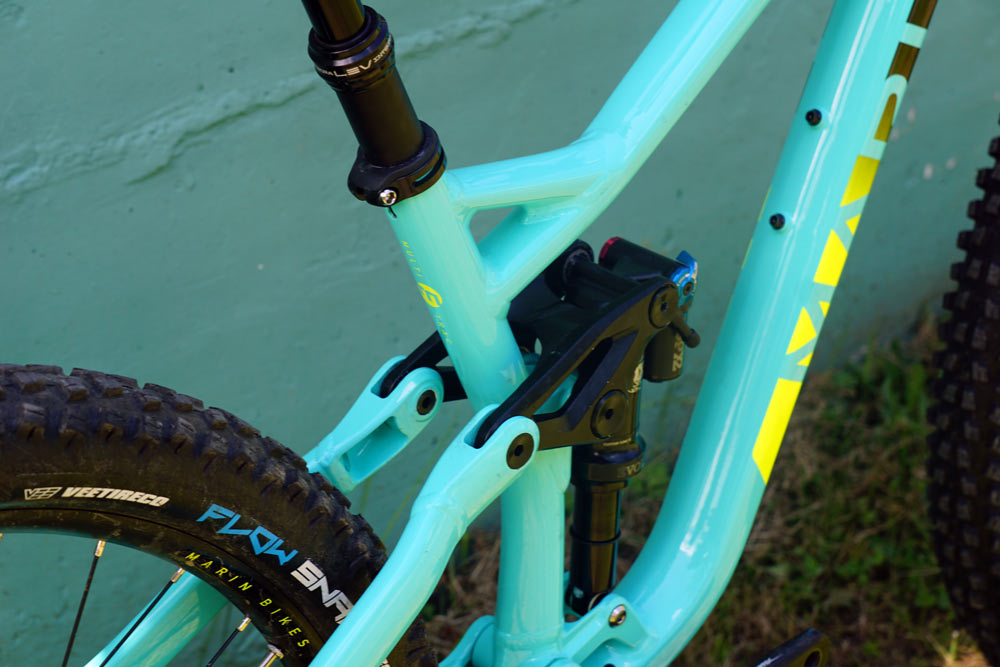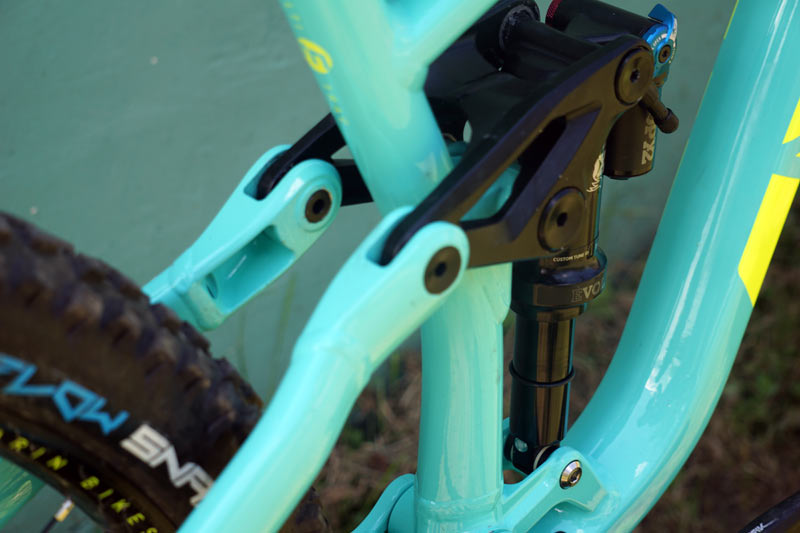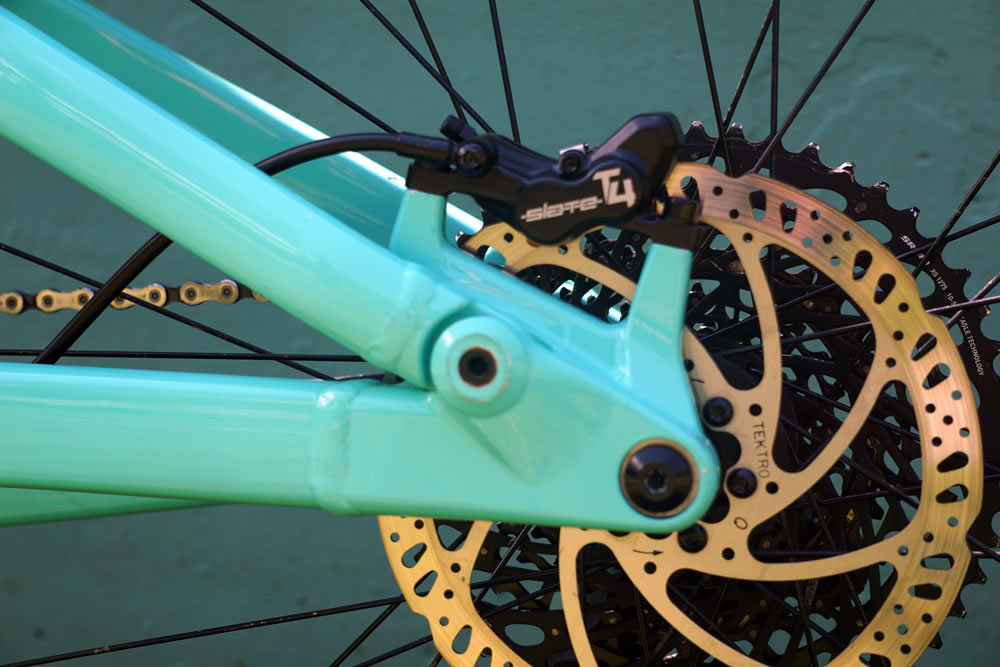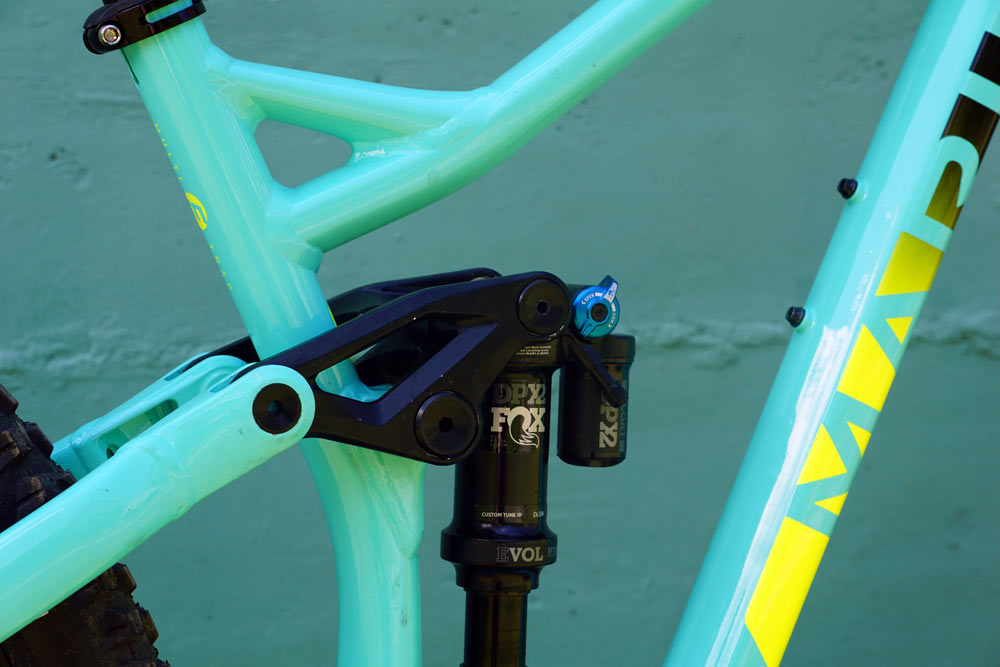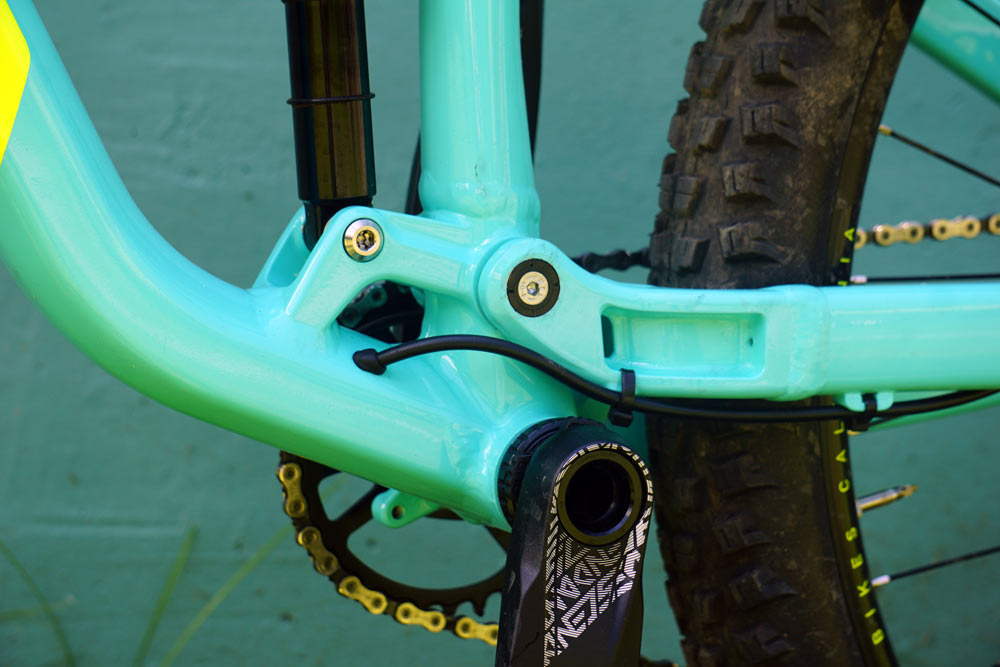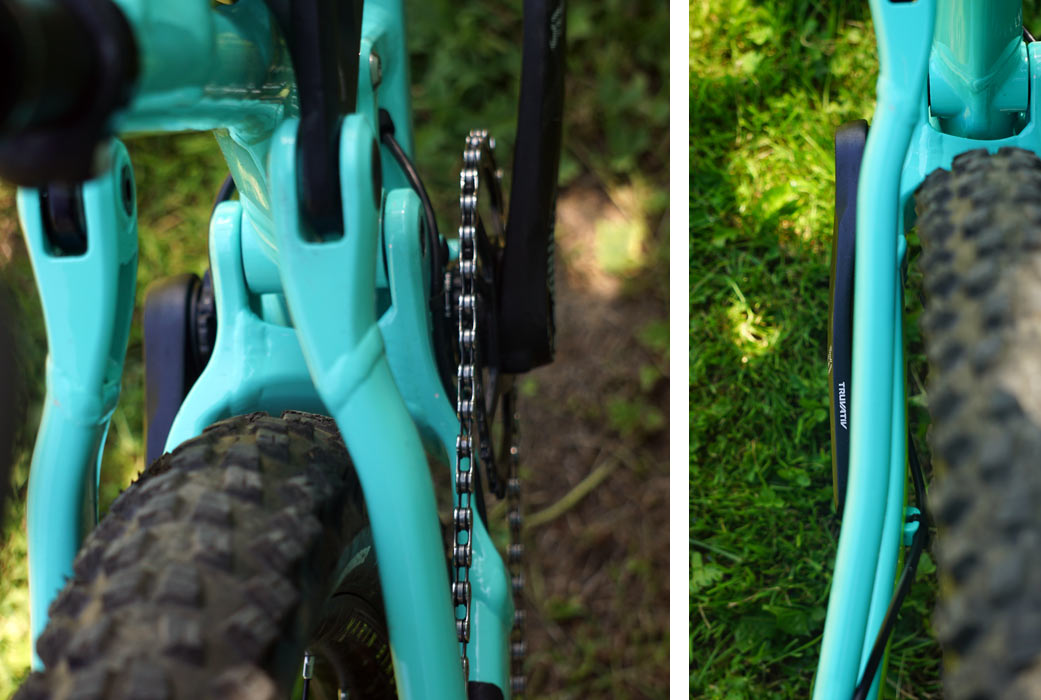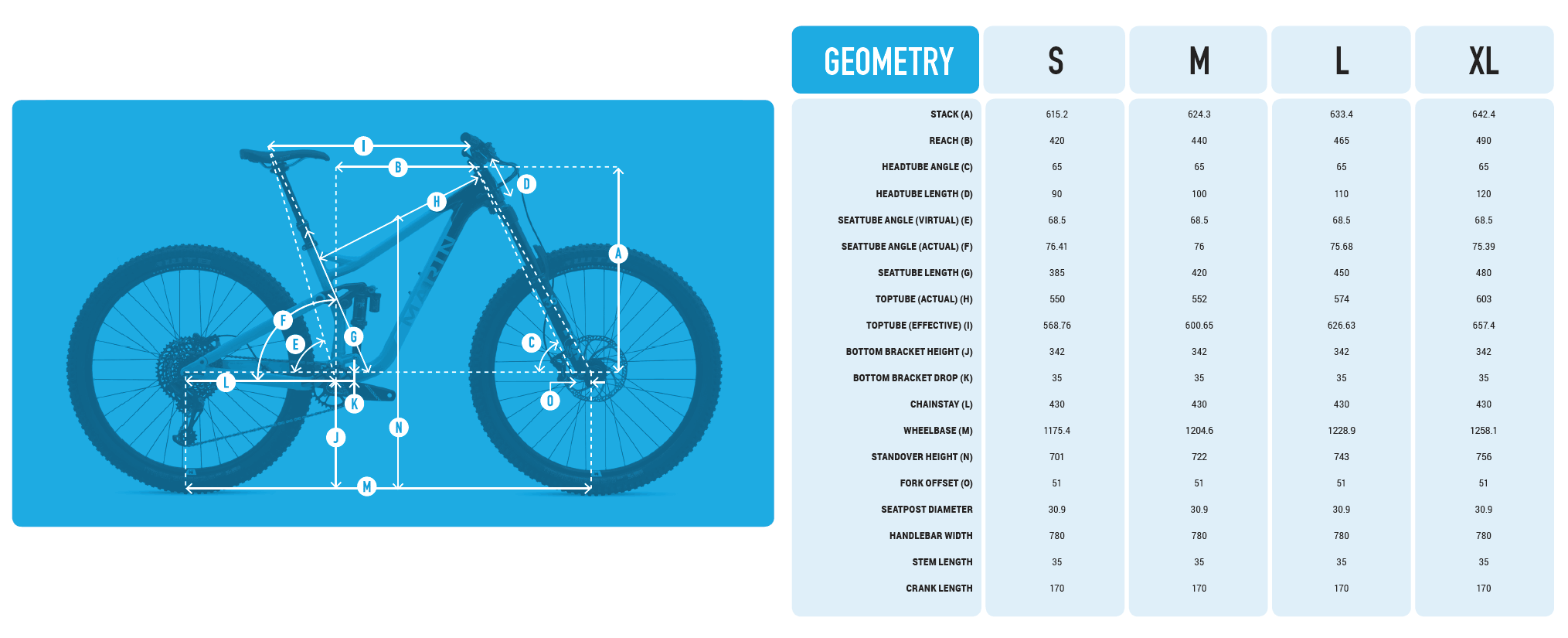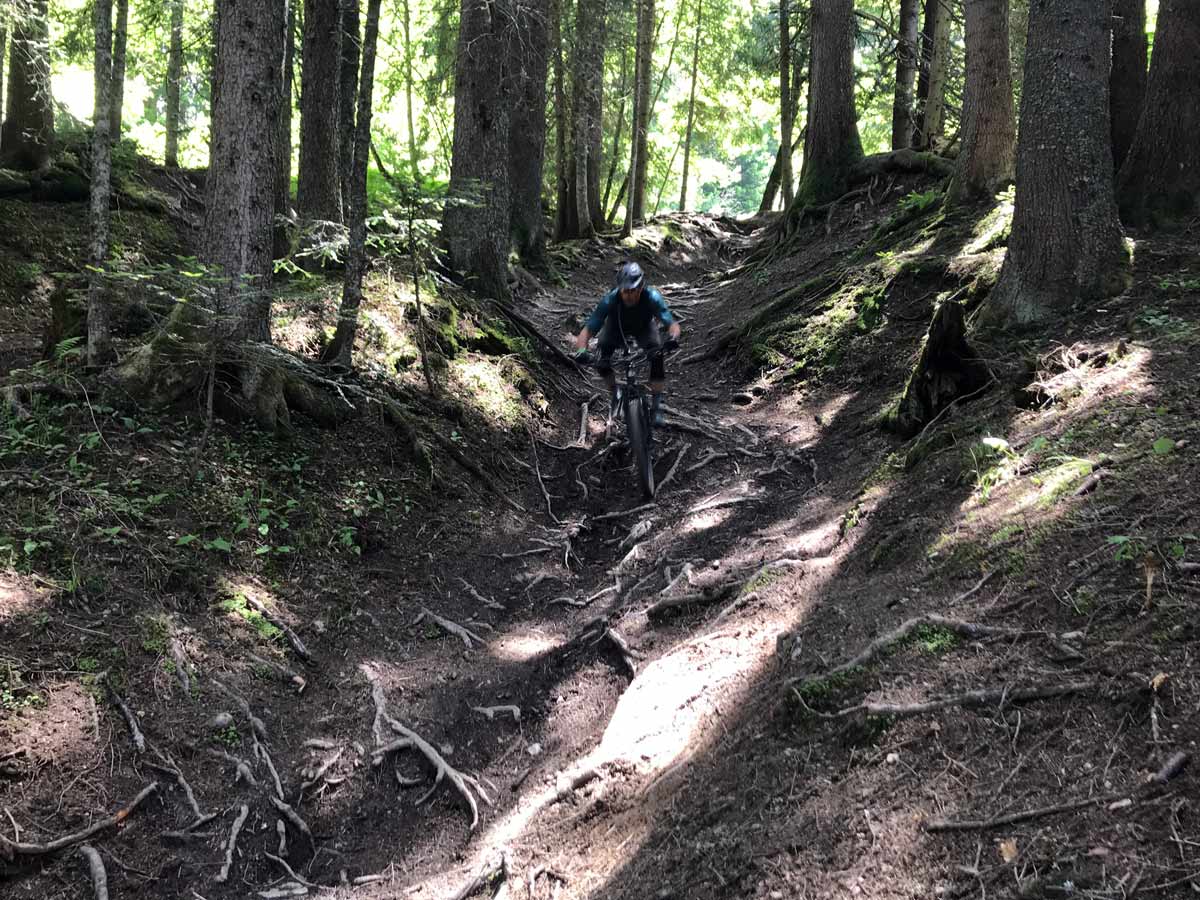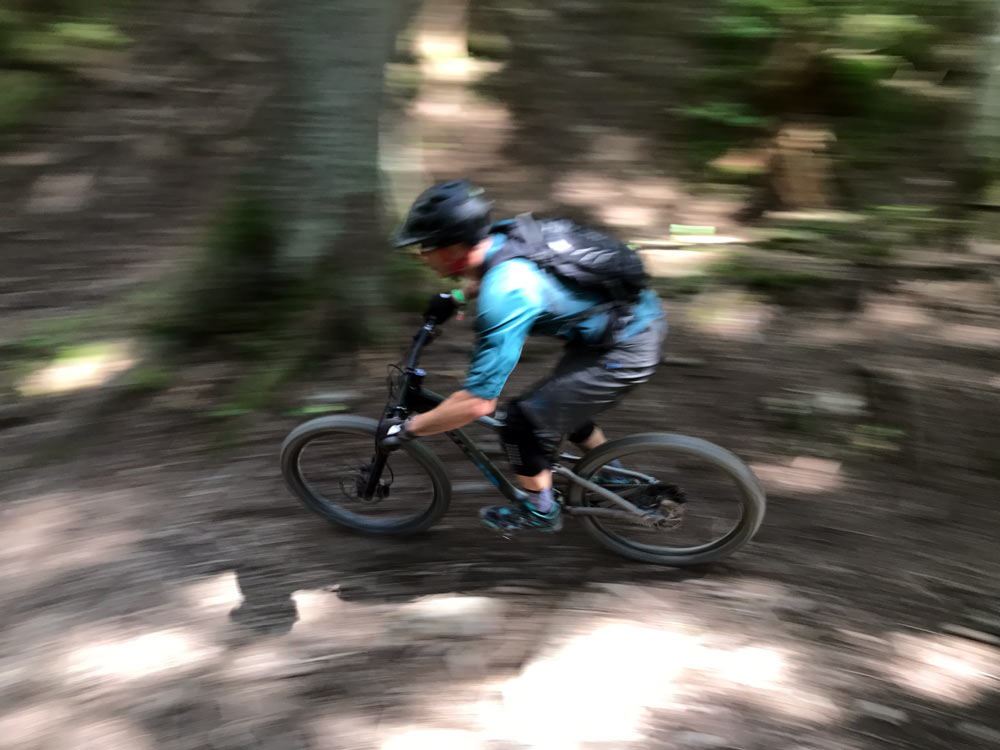The all-new Marin Alpine Trail is a 29er enduro and trail bike, and becomes their most aggressive mountain bike for 2019. It gets 150mm rear wheel travel with 160mm forks, a high end alloy frame and long, low geometry. It’s meant to go fast, get rowdy, take a beating, and then get you back to the top of the mountain for the next stage.
The idea behind this, and all of their mountain bikes, is to create something that’s fun to ride, is spec’d for durability, and be easy to own. As such, it’s an affordable single pivot design, relying on a linkage driven shock to control the kinematics and careful component selection to put the performance where it delivers the biggest bang for the buck.
The new Alpine Trail uses their Series 4 alloy frame, where their Hawk Hill, Rift Zone and B17 use Series 3. The differences are that Series 4 frames have more advanced tube shaping, more complex forgings for things like the bottom bracket and shock yoke lower section, a formed and forged rocker link, and full internal routing.
It’s built on their MultiTrac suspension platform, like some of their other models, but is built for more aggressive riding. That means a larger main pivot and rocker link pivot, with larger bearings, and larger bearings at the rear pivot, too. This helps it handle the longer 150mm travel, which makes more movement at each pivot, and creates a stiffer frame.
They kept the rear pivot above the rear axle to give it better pedaling performance than if they’d gone with a four-bar linkage by putting the rear pivot on the chainstay (before the axle).
The rocker link is one piece, taking two forged halves and welding them together with upper and lower shelves to create a quasi-box section. This makes it very stiff, which let them eliminate a seatstay bridge and keep the needed frame stiffness. It’s designed around a metric trunnion mount shock, which uses a wide mounting bracket for better stiffness and less torsional influence. So, it should all stay moving freely regardless of how hard you’re whipping through the terrain.
The air shocks are tuned for a more linear stroke, using one of the smallest air volume spacer setups, meaning you can upgrade to a coil shock without affecting bottom out prevention. Stock options are a Fox or X-Fusion O2 pro R, the latter getting larger positive and negative air volumes than before, along with a new transfer port to better balance air pressures.
The main pivot is big and uses an expanding collet design to lock itself into place and prevent play.
The bike is designed around big 29×2.6 tires, and yes, it’s intended only as a 29er…not a 27.5+ bike. They say a proper 27.5″ version may follow, or a carbon version. Or both. But for the near future, you’ll be able to choose from two build specs on this alloy frame:
The Alpine Trail 7 has Shimano M7000 shifter with SLX derailleur, e13 9-46 11-speed cassette, Tektro Orion brakes, Vee Tire Flow Snap Tackee 29×2.3 tires, and house wheels and alloy cockpit with X-Fusion Manic dropper post. Fork is the Rockshox Yari RC, shock is X-Fusion O2 Pro RXC. MSRP is $2,650 (€2,700 VAT included).
The Alpine Trail 8 gets SRAM NX Eagle rear shifter & derailleur, with the lighter GX cassette, Tektro Slate T4 brakes, and KS LEV dropper post. Figure about 30lb for a complete bike with tubes in it. Fork is a Fox 36 Performance with a Float DPX2 shock out back. MSRP is $3,600 (€3,800 VAT included).
Both are available late summer. Across the line, their multi-linkage Attack Trail line is gone, now it’s just this MultiTrac platform and the React2Play system designed by Darrell Voss.
Alpine Ridge First Ride Review
I had a day to shred the new Marin Alpine Ridge at the Les Gets bike park in France, and it impressed. Mostly, I used the lifts and ripped down the mountain, favoring the natural trails over the bermed bike park lines. With plenty of roots and rocks and technical descents, I had ample opportunity to test the suspension. It performed on par with other 150mm bikes I’ve ridden, tracking through the terrain in a well controlled manner. Which shouldn’t come as a surprise considering Marin’s EWS background with their other frames…they have a solid foundation of knowledge to build on. But considering the price point, which is about half of most bikes I end up reviewing, it is quite a pleasant surprise. Just goes to show how far down awesomeness has trickled over the past few years.
I only did a little climbing, mainly to backtrack for repeat photo runs, so I can’t speak to its long distance climbing performance. But I did attempt few steep, twisting singletrack sections both seated and climbing (a couple times each), and it seemed to work well even with the shock fully open. Standing did elicit some bobbing, but seated climbing felt much more efficient. My hunch is, with the shock locked out (or just set to firm), it’d be a capable climber able to get you back to the top without wearing you out. Another nice surprise was the Vee Flow Snap. My test bike had it only on the front (these were pre-production and ended up having to pull what they could to get them built in time for this launch), but it managed the wet roots, muddy sections and loose scrabble quite well.
The important thing for a bike like this to get right is the suspension and frame performance. And with tires costing what they cost these days, starting with a good set of those is a nice plus, too. With this solid foundation, it becomes a platform worth upgrading, and Marin seems to have succeeded on that front. Several other journalists seemed equally impressed with its ride quality, and a few key upgrades could easily make the bike more lively as the budget allows.
